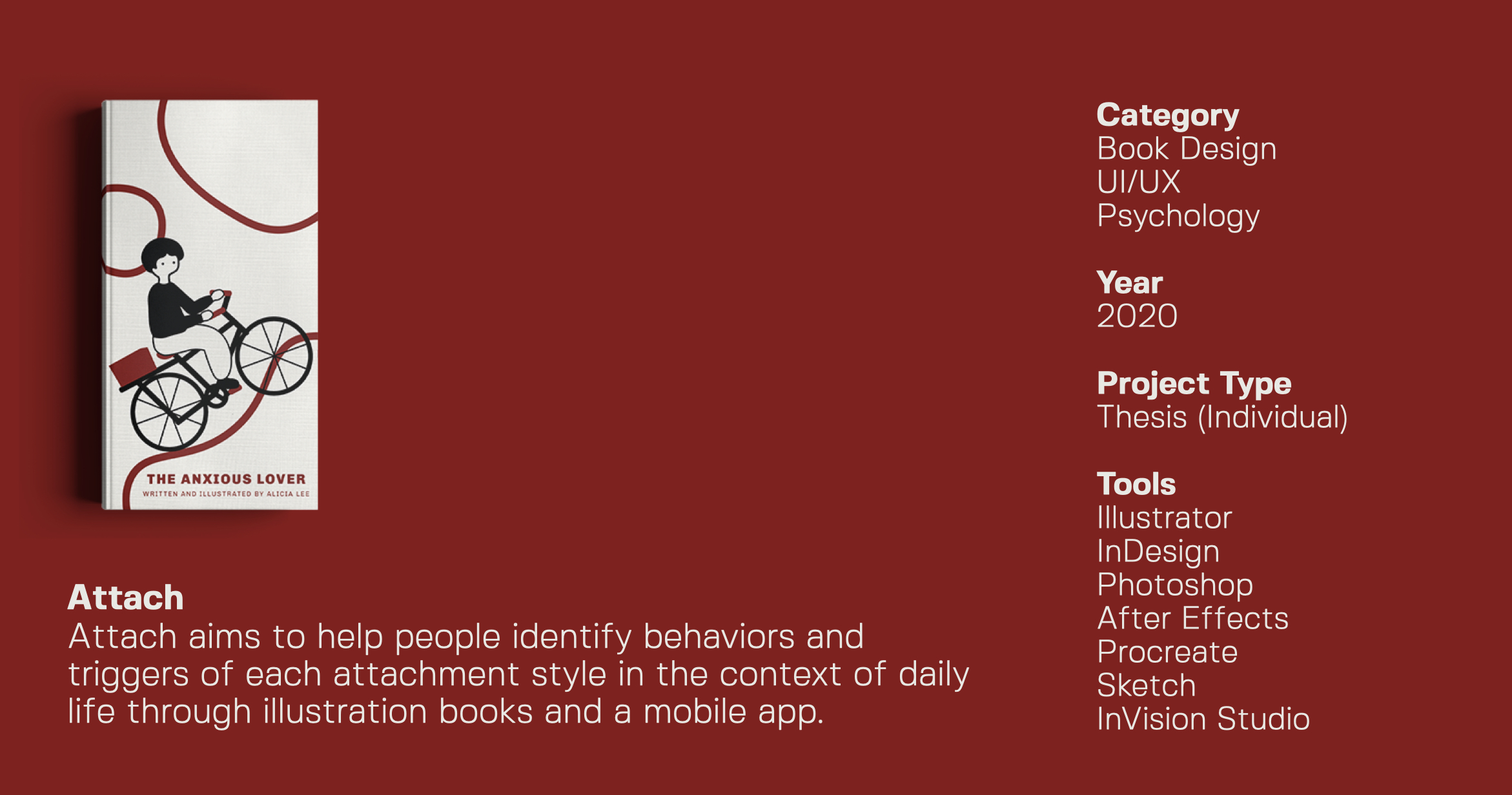

BOOK DESIGN



ABOUT EACH BOOK
The books show how an attachment style plays a subtle and sometimes direct role in daily-life scenarios. The scenarios aim to show how many moments can be negatively mistranslated. The book also touches on how these styles are developed starting from childhood.
While following each character, we get a glimpse of their unique thoughts, their emotional tendencies, and their actions through simple illustrations.
For example, these specific pages portray the emotional distance a Dismissive Avoidant person feels when they are given emotional expression or expectations. Rejecting or purposely pushing away a person they like or love is a common yet unique trait of Dismissive Avoidant people.
A UNIQUE MOMENT OF ANXIETY
Something I paid extra attention to was capturing anxious moments that are unique to each attachment style. How a person is triggered and how that person deals with this trigger is a huge indication of what their attachment style is.
To get a deeper understanding as well as collect scenarios, I conducted several interviews with multiple attachment styles.
This particular set of pages was made specific to Preoccupied Anxious triggers and anxiousness. It captures a thought process and sensation that is common to all Preoccupied Anxious when they are waiting for a response from their partner. In this moment, every minute feels like an eternity. A million thoughts of worries, doubts, and distress accumulate in their head until there is a reciprocation.


DIVING DEEPER
At the end of each book, there is a bingolike sheet with a brief sentence of common tendencies which the reader can identify with both quickly and easily.
If the reader feels that they identify with many of the tendencies and decide to dig deeper, there is a section covering a full range of traits, life during childhood, and suggestions on how to deal with the specific thought patterns.
ILLUSTRATION STYLE
A charactar design thesis paper written by Jenny Li in 2020 studies how animators make protagonists' faces more 'simple' while they make the antagonists' faces more 'complex'.
Viewing simple faces, the viewer is able to project themselves onto the protagonist. Whereas complex faces bring dissimilarity, encouraging distance between the antagonist and the viewer.
As the books involve deep self-reflection, I decided to utilize this technique of simplifying the characters' faces. It was crucial to allow easy-projection from the reader to the book's character.

MOBILE APP
Wireframe Sketches • Initial Design

WIREFRAMES

FINAL APP DESIGN



2020 • THESIS